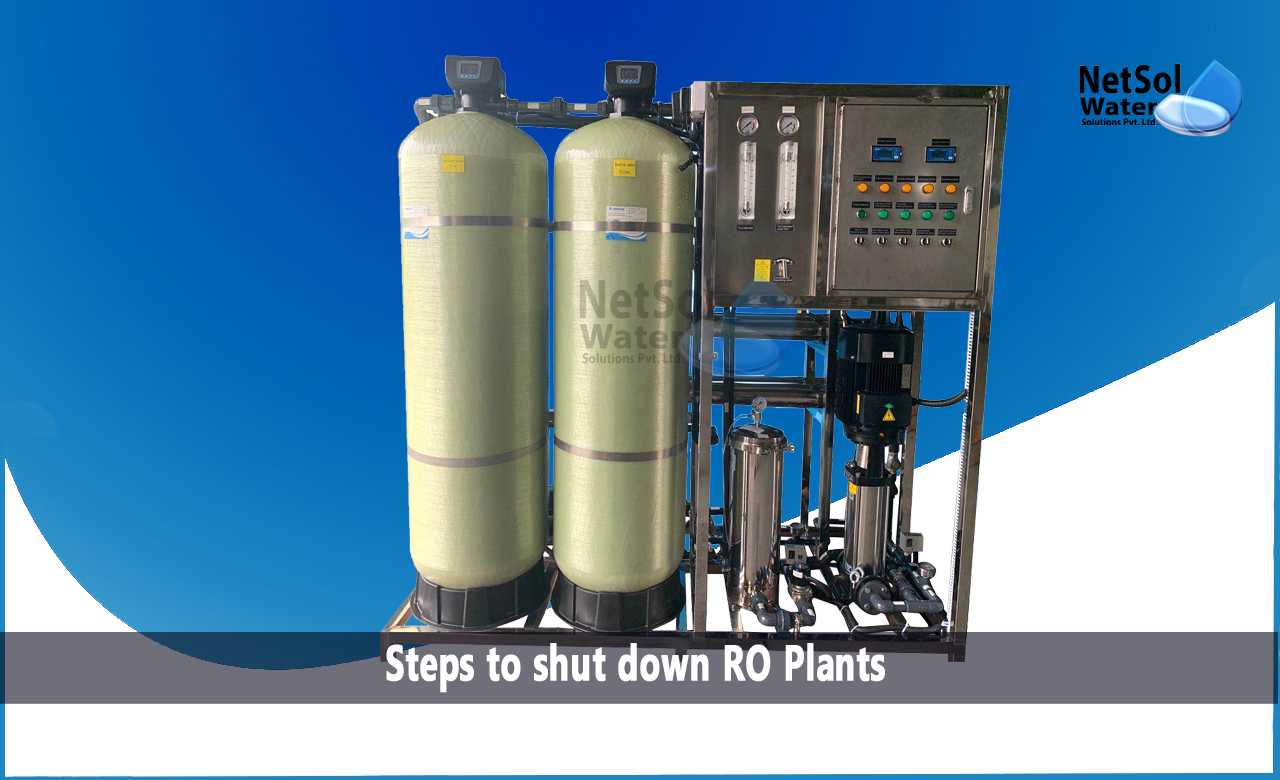Reverse osmosis is a type of water filtration that eliminates impurities from drinking water, by trapping large impurities and contaminants including chlorine, salt, dirt, and TDS in a semi-permeable membrane (synthetic liner).
There is a proper way of operating RO Plants, which involves their starting procedure, shutting procedure as well as maintenance procedures. In this blog, we will understand some of the steps to properly shut down RO plants without causing any damage to the equipment.
What are the various steps to shut down RO Plants?
· Keeping RO membrane parts in storage
The components of the RO membrane should be kept in a cool, dry warehouse or, if boxed, at a temperature of at least 5°C and ideally 10–20°C.
· Maintaining the RO membrane system
1: Tem?porary preservation
Flushing might not be done for two hours after shutdown. If the machine has been off for more than two hours, flush it for 20 minutes with RO generated water.
2: Preservation for the interim
Within 30 days of a shutdown lasting three days or longer, preserve using the procedures listed below.
(1) Cleaning the RO membrane element in-line or clean-in-procedure (CIP).
(2) Long-term rinsing with RO-produced water.
(3) After the rinse is finished, close the valve to keep the solution in the RO section, and save the RO Membrane in the rinse water (RO produced water).
(4) Complete actions 2 and 3 once per week.
In order to prevent secondary contamination of the membrane element, this approach must guarantee that the rinse water supply is always pure. This will stop microorganisms from growing in the water tank and pipeline.
3: Long-term maintenance
Use bisulphite to protect the RO membrane if you stop the machine for longer than 30 days.
(1) Cleaning the RO membrane element in-line or clean-in-place (CIP).
(2) Long-term rinsing with RO-produced water.
(3) Rinsing the RO segment using water produced by the RO system and a sodium bisulphite solution with a 1.0% concentration.
(4) Close the valve to retain the solution in the RO section once the RO section is completely filled with the solution (needed to ensure complete filling).
(5) When the temperature is below 27°C, repeat steps 1, 2, and 3 every 30 days with fresh cleaning solution, and every 15 days with fresh solution when the temperature is above 27°C.
(6) The pH of the solution should be monitored and regulated between 3.5 and 9.5. Since, prolonged exposure to an acidic or alkaline environment will harm the membrane, the protective solution should be changed if the pH value is outside the aforementioned range.
Regular monitoring of the acid sulphite concentration is necessary. If the concentration of the solution falls below 0.1%, a new solution should be used, and the temperature should be kept below 25°C.
(7) The system must be filled with antifreeze and the pipeline must be shielded from frost cracking, when the expected ambient temperature is less than 5°C.
The antifreeze solution can often be made up of 30% glycerine or 20% ethylene glycol, both of which have freezing points of around -10°C. The procedure is the same as that described above for long-term membrane storage; the membranes are first chemically cleansed, rinsed with pure water, replaced with antifreeze, and then sealed.
(8) Once the RO system is prepared to run again, open the exit valve, clean it with low-pressure water, and then drain the produced water. Checking the remaining disinfectant in the generated water is necessary, before starting the RO system again.
How can Netsol Water assist you?
At Netsol Water, we combine technology, funding, and knowledge to meet customer’s water treatment needs, at an affordable price for both commercial water treatment facilities, and industrial wastewater treatment plants. Thanks to our ten years of experience helping some of the biggest end-users in India, with their water and wastewater treatment needs, our highly skilled and trained field staff is ready to help you achieve your operational and sustainability goals.
Therefore, in addition to providing thorough system design and engineering, we are happy to offer field services and support with the selection of treatment materials. Contact us at +91 9650608473 or enquiry@netsolwater.com to learn more



